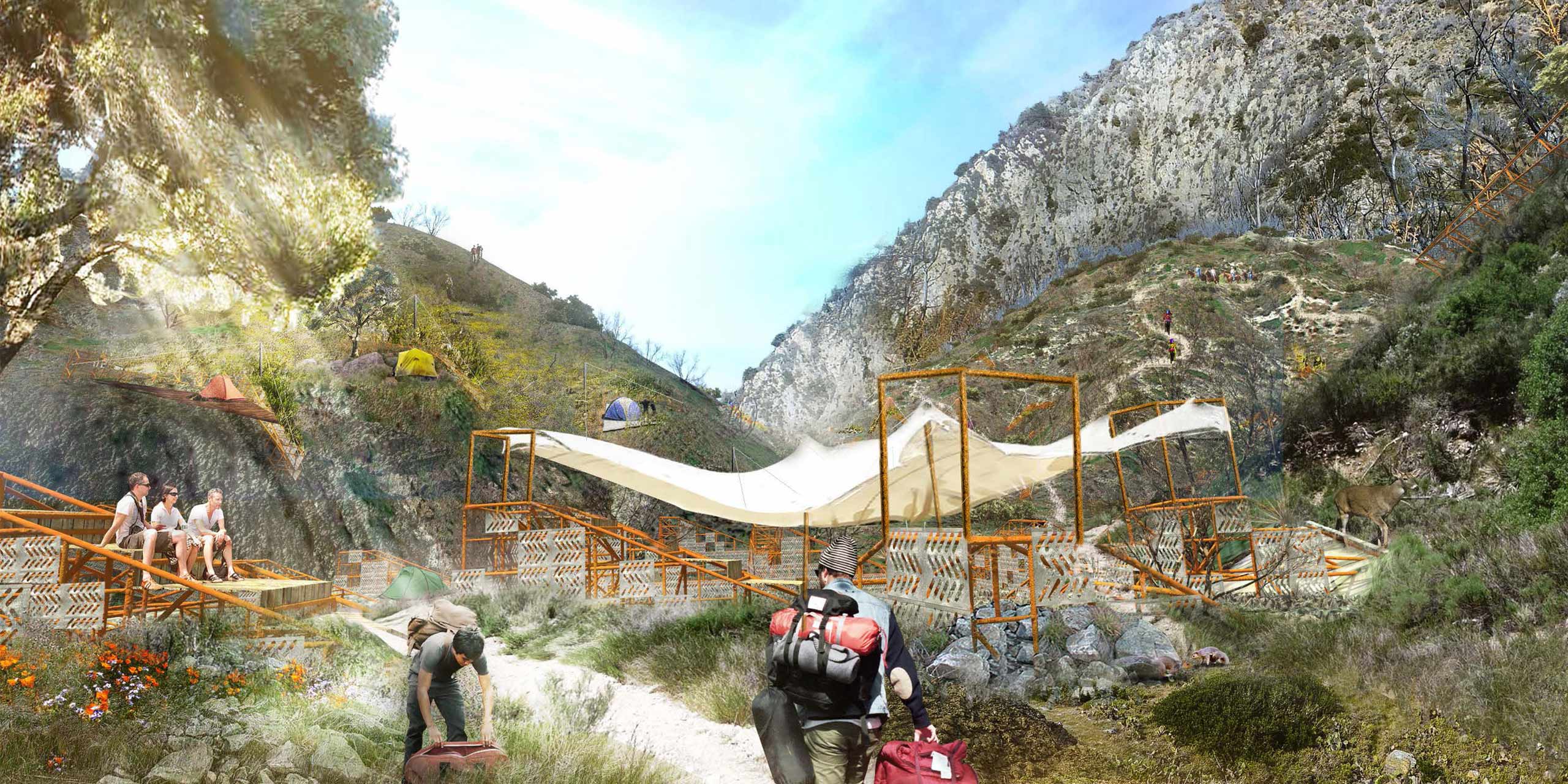
SLIDE Research
Re-thinking the role of landscape architecture to create resilient communities
SLIDE is a research initiative that reimagines the role of landscape architecture. The strategy works together with the natural environment and creates resiliency to protect communities against disaster.
Southern California’s weather cycle of fire, floods, and mudslides highlights the limitations of static infrastructure designed to control natural processes. A few years ago, RIOS saw this shortcoming as an opportunity to re-think the relationship with this extreme environment, and to re-imagine the role landscape architecture can have in shaping it.
Awards:
2014 ASLA Southern California Council Merit Award, Design
2019 Westside Urban Forum Design Award, SLIDE, Unbuilt Public Space
2019 Architect Magazine R+D Award, Honorable Mention
2020 Fast Company World Changing Ideas Awards
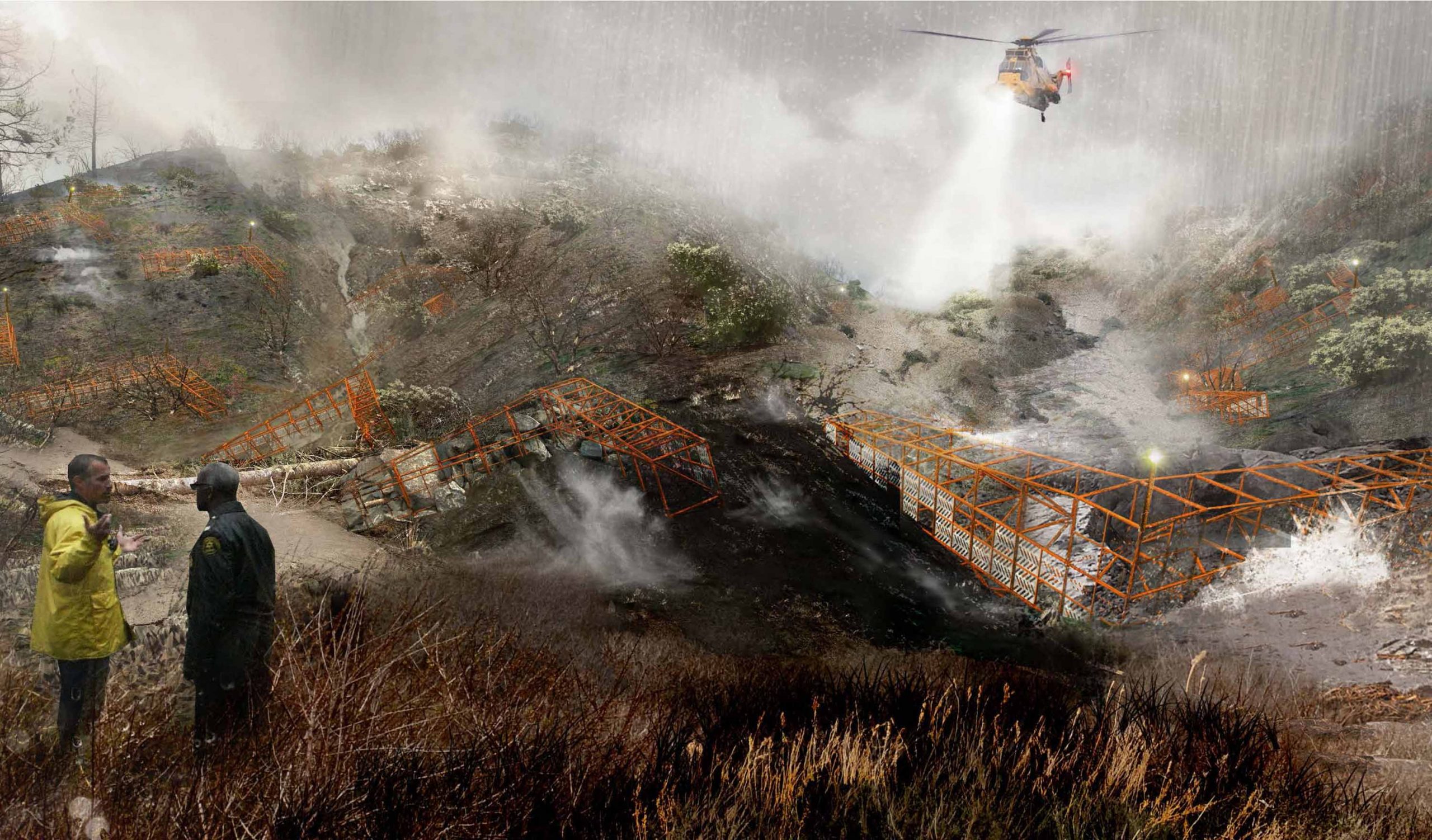
Fire. Flood. Mudslides.
These three components of L.A.’s extreme weather cycle create a deadly combination. Fire clears vegetation from Southern California’s steep canyons, leaving them vulnerable to flash floods and perilous mudslides. For most of the 20th century, City, State, and Federal agencies have attempted to control these natural processes as communities sprawled deeper and deeper into once-uninhabitable canyons. But as this infrastructure, designed to restrain nature, comes to the end of its 50-year lifespan, we wondered how to fundamentally rethink the way we approach prevention?
SLIDE deconstructed the systems that failed during the 2009 Station Fire in the Angeles National Forest to envision a more resilient infrastructure for California communities prone to the cyclical hazards of fire, flood, and mudslides. By hacking into the natural processes of mudslides and wildfire, our strategy utilizes the material produced by the fire and mudslides as a safeguard against future disasters.
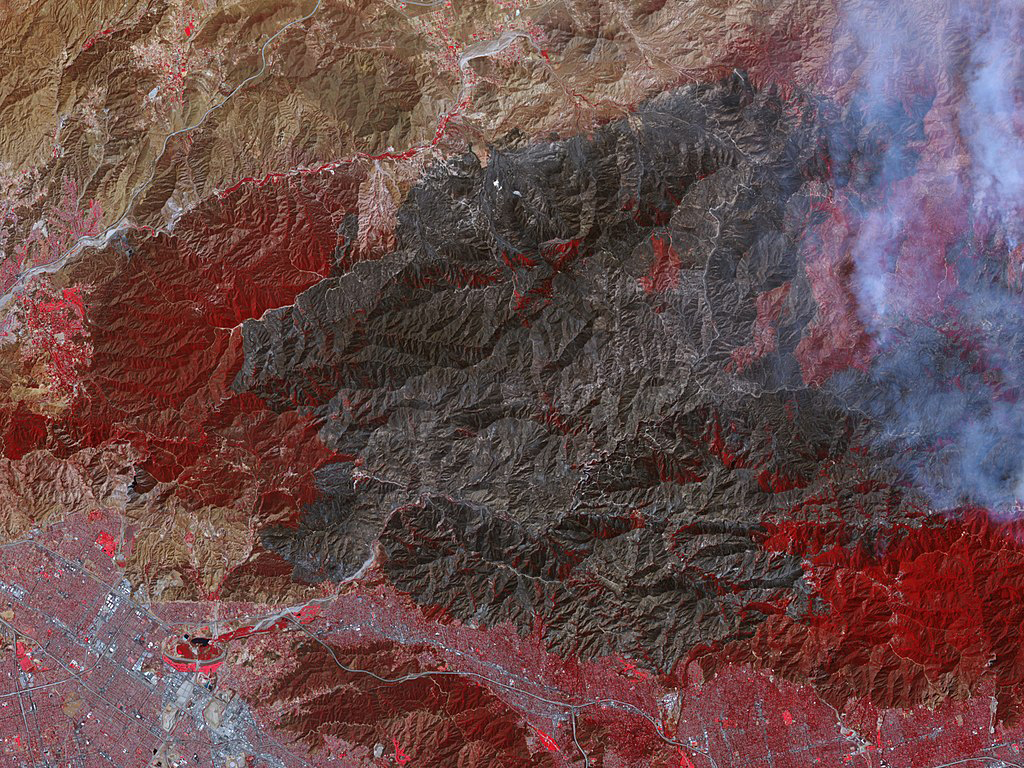
An aerial view of the 2009 Station Fire, which ravaged a 252-square-mile area of Southern California’s La Crescenta foothills and sparked multiple catastrophic mud slides.
The research focuses on three areas: examining the storm cycles of fire, rain, and mud slides; dismantling the failures of existing infrastructure; and projecting the financial costs of the current system.
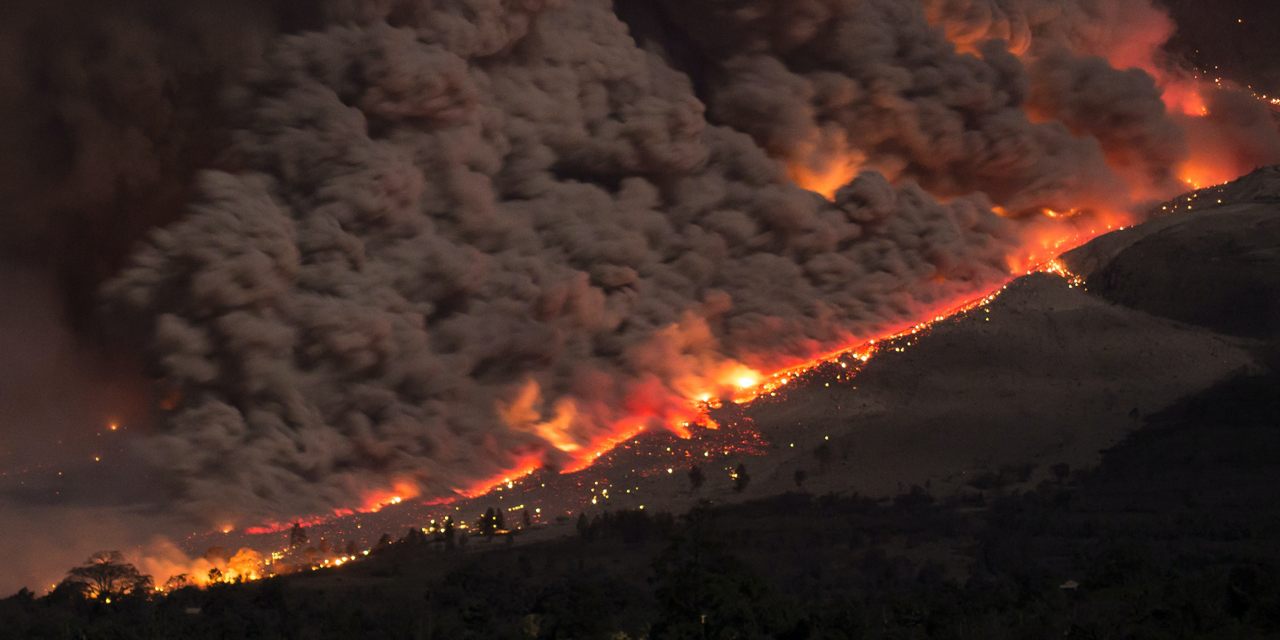
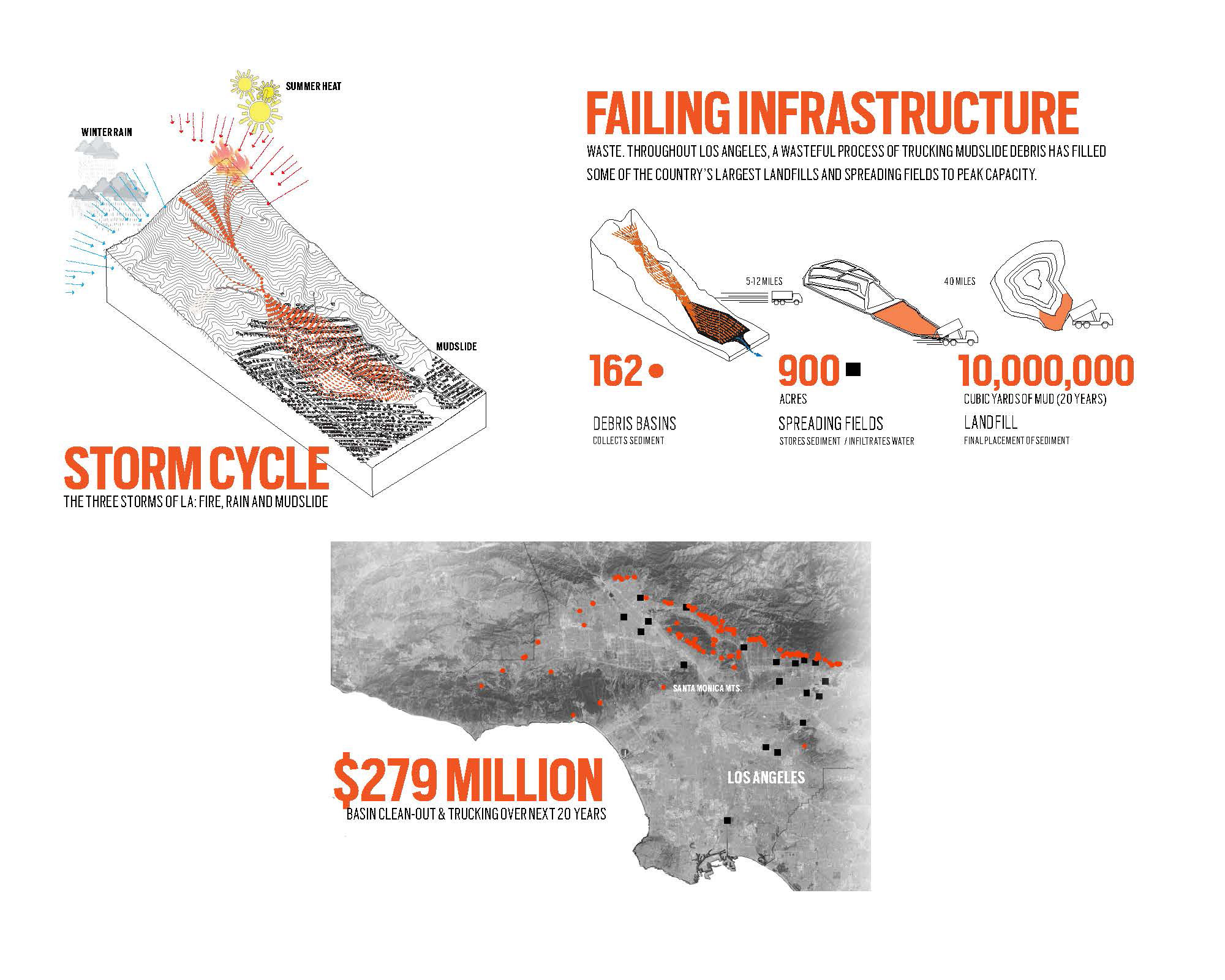
A Resilient System
The new system begins with the siting of micro-basins; a simple gabion intervention. The micro basins serve two critical functions. When the micro basin’s point upslope they slow and divert debris, reducing the overall impact of the debris flow on urbanized areas. When faced downslope, the micro basins both filter and collect debris, creating a more aqueous flow.
In contrast to the fixed and static infrastructure that currently attempts to control mega storms, this proposed landscape-based approach takes advantage of cyclical debris flows to create an ever more resilient system.
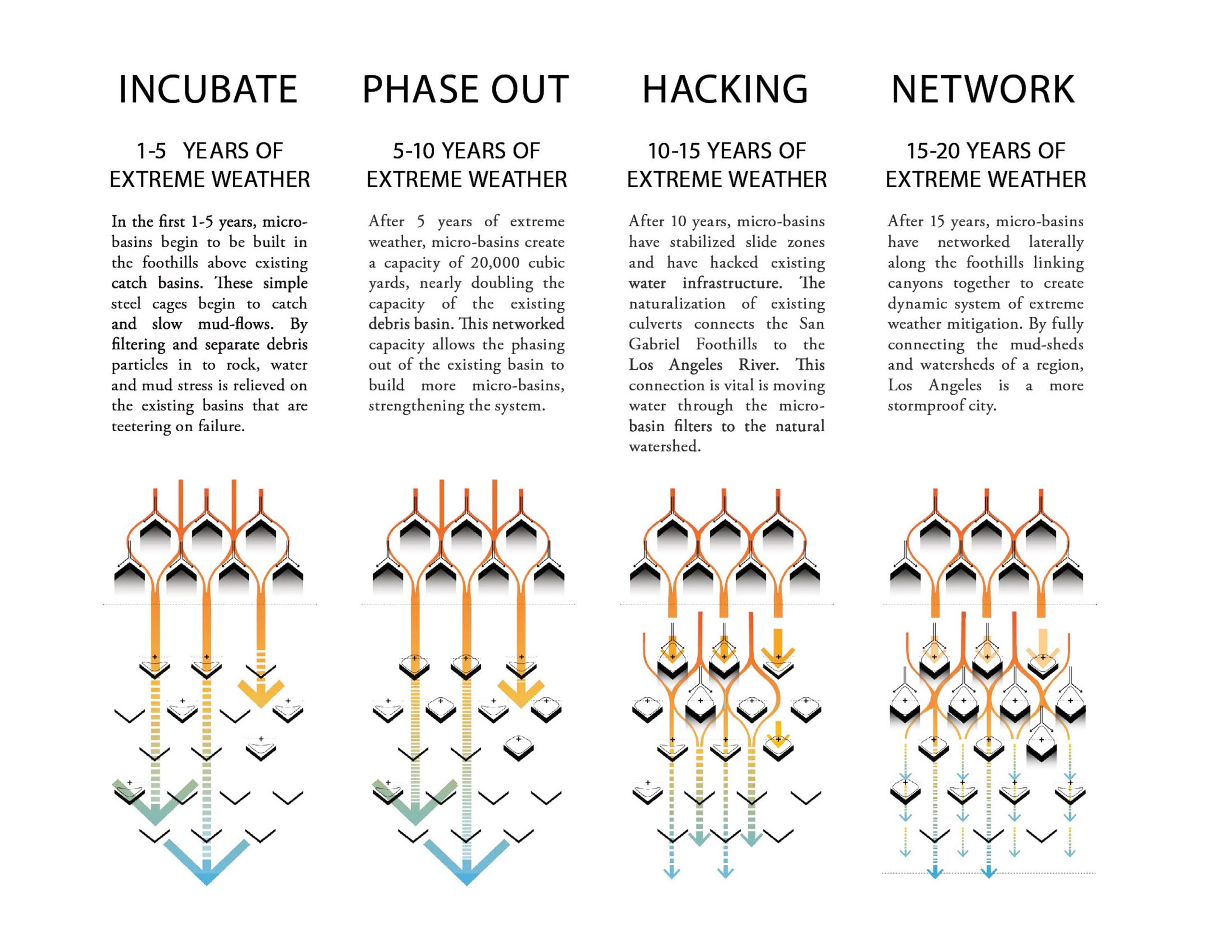
The establishment of this system begins with the siting of microbasins; a simple gabion intervention. The micro basins serve two critical functions. When the micro basin’s point upslope they slow and divert debris, reducing the overall impact of the debris flow on urbanized areas. When faced downslope, the micro basins both filter and collect debris, creating a more aqueous flow.
By creating a system that is made of re-used hillside materials primarily of rock and mud, the micro basins become opposite of the desolate concrete-capped catch basins that currently dot the edges of hillside communities; they become moments of thriving biodiversity and habitat.
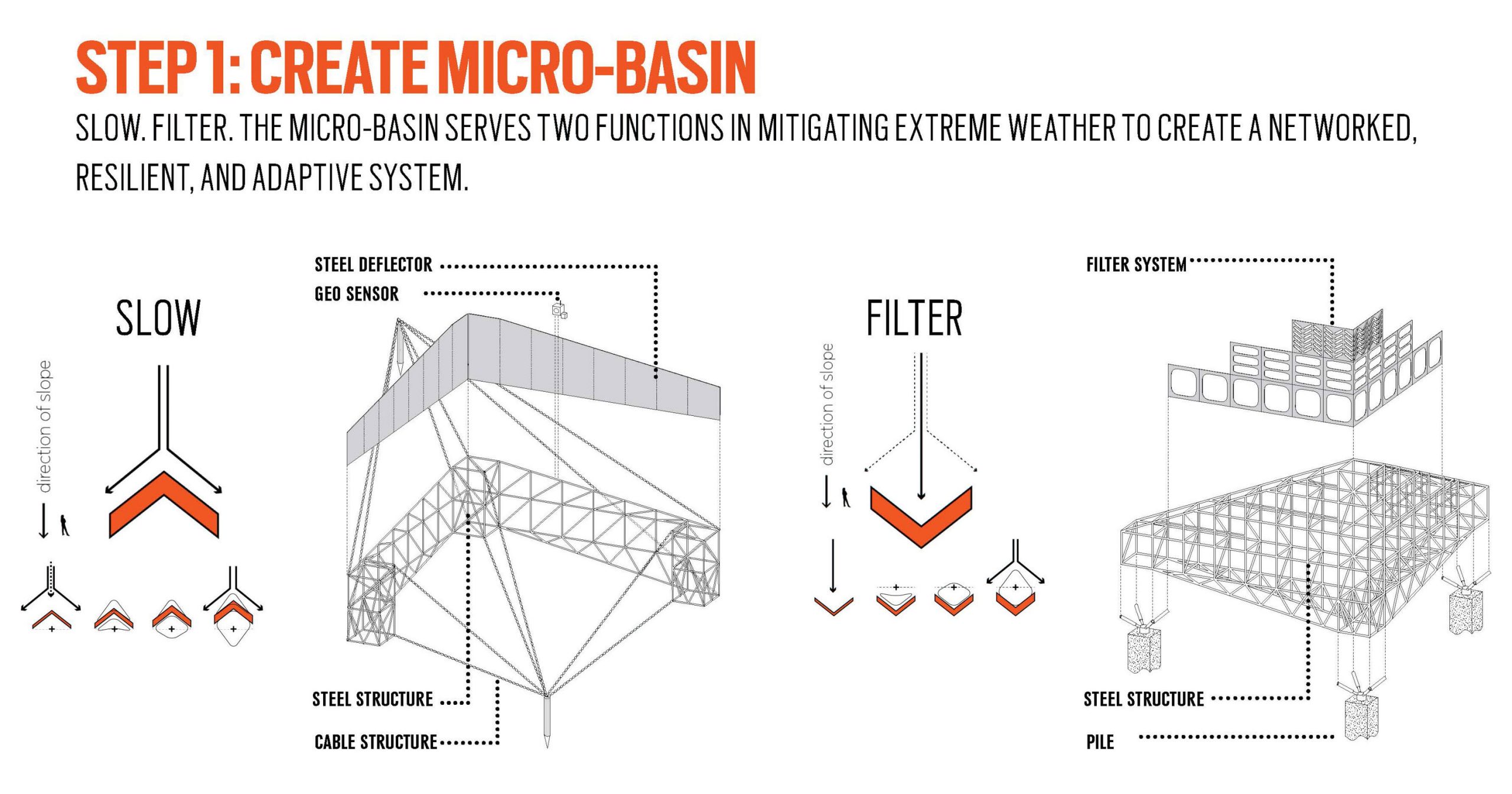
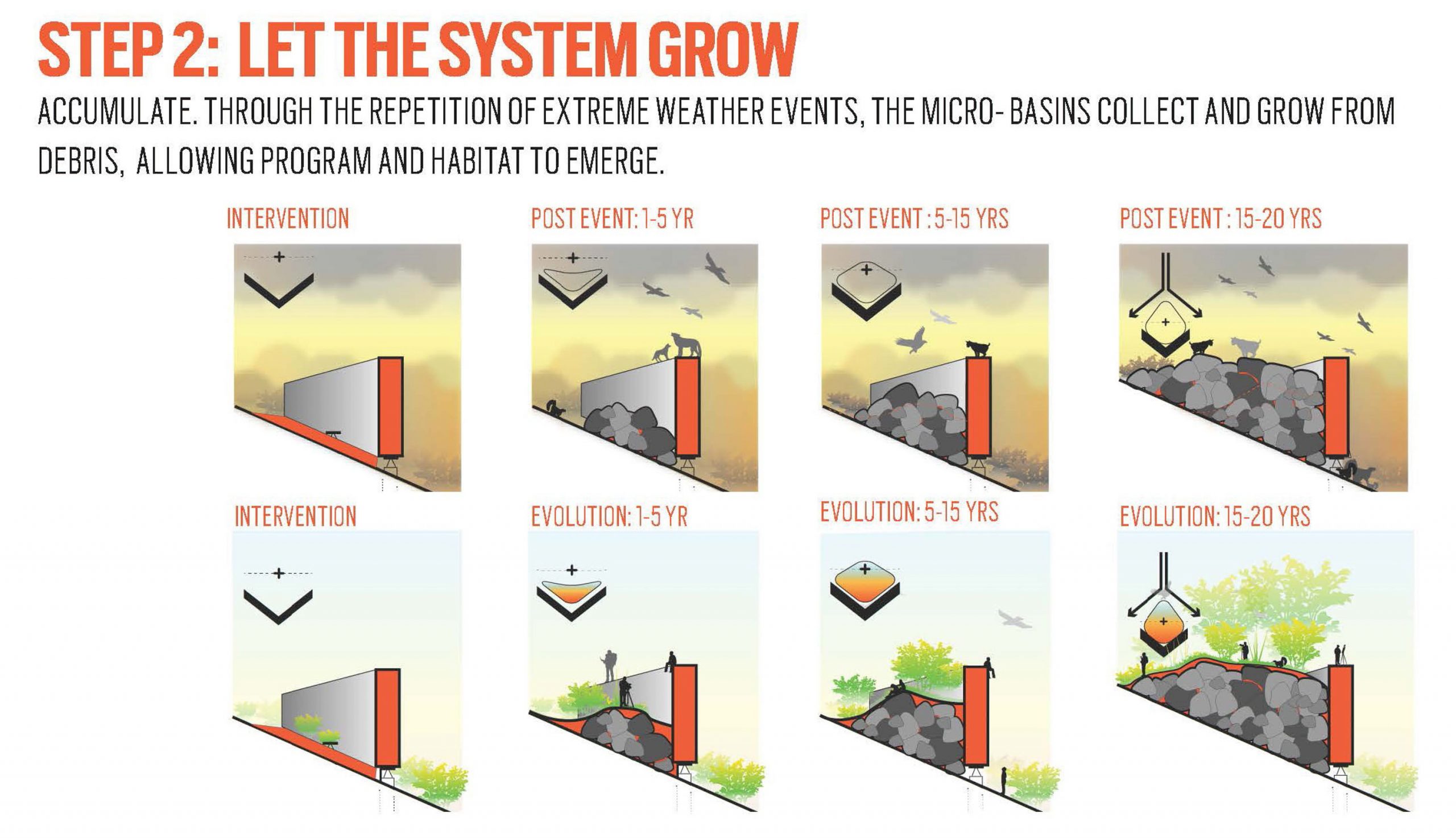
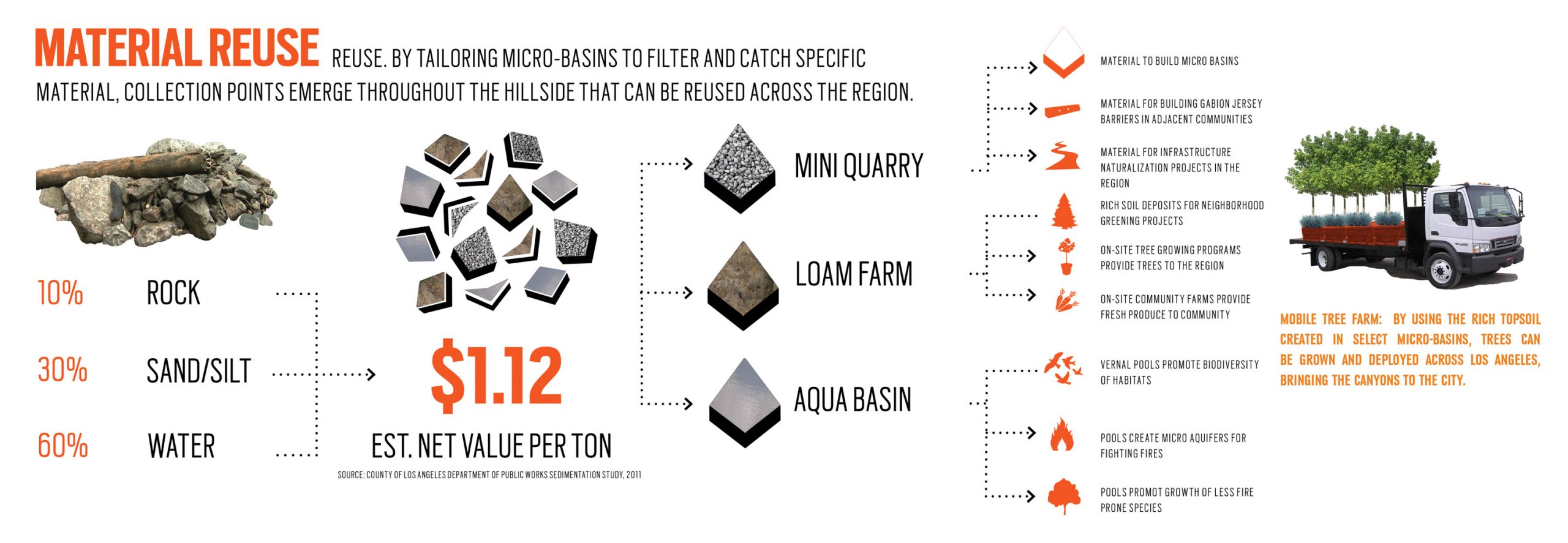
The project understands that organic matter in debris flows are currently untapped community resources. By creating variation in the apertures of the micro basins, different materials can be harvested and reused. These materials could bring life to hillside tree farms, soil cropping operations, micro aquifers for firefighting, and gabion jersey barriers.
Five years after establishment, the micro basins aggregate at the canyon specific level, creating a landscape machine for processing debris flow and new shared recreational opportunities.
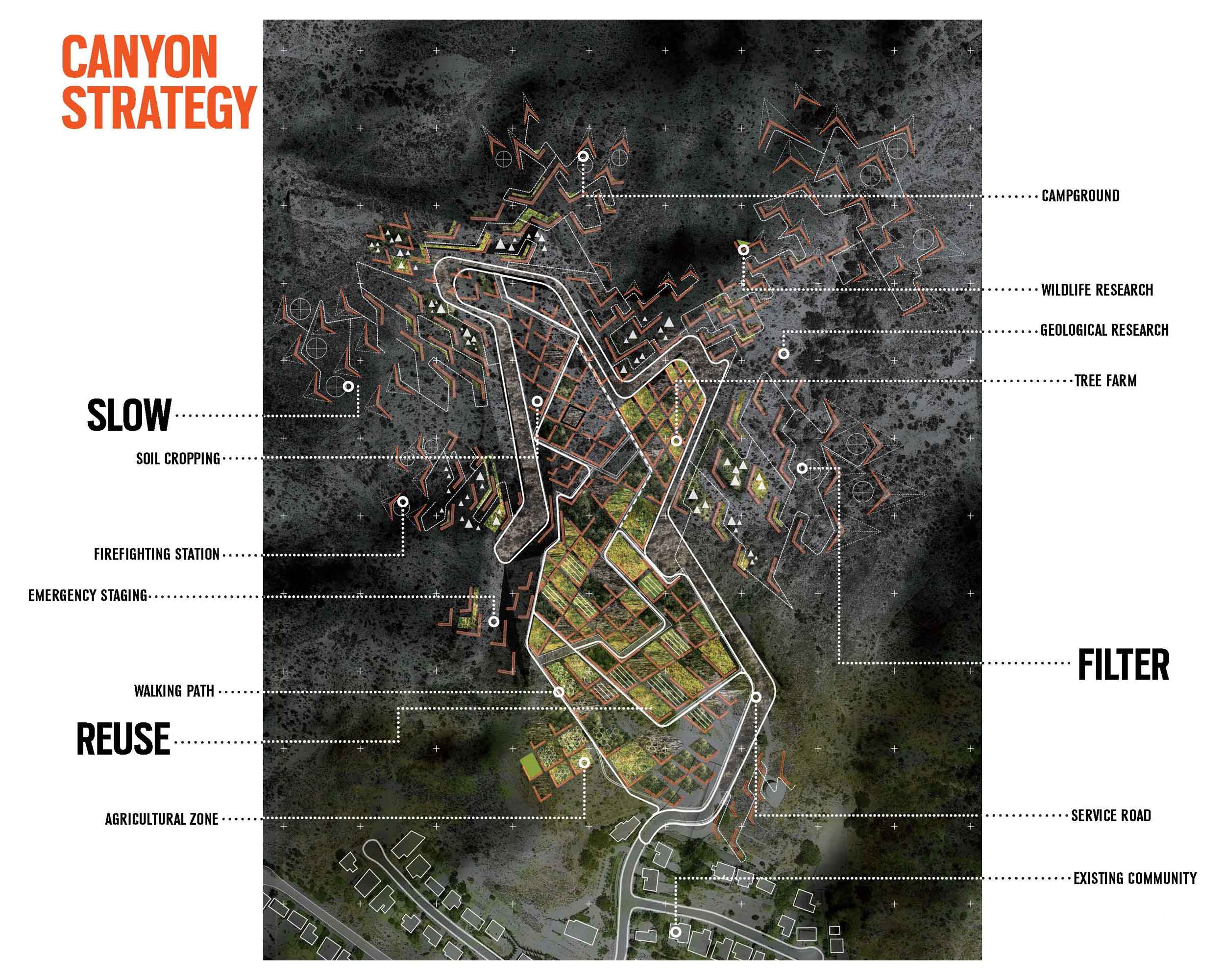
Micro basins are sited strategically along hillside slopes to either slow or filter debris flow materials.
Currently, following a mudslide, trucks clean out debris basins and then haul away the debris to landfills, at a rate of half a million cubic yards per year. This expensive solution carries a huge carbon footprint, and is also spatially unsustainable: the 1,365-acre La Puente Landfill, where so much of this debris has been trucked over the years, is now full.
Twenty years after establishment, multiple canyons with micro basin infrastructure systems laterally link together create a regional networked approach to soft and resilient infrastructure.
Moving downslope ‘Green Streets’ are created along historical creek beds allowing a course for more aqueous flows to connect to their natural watershed such as the Verdugo Wash, which is a tributary to the Los Angeles River.
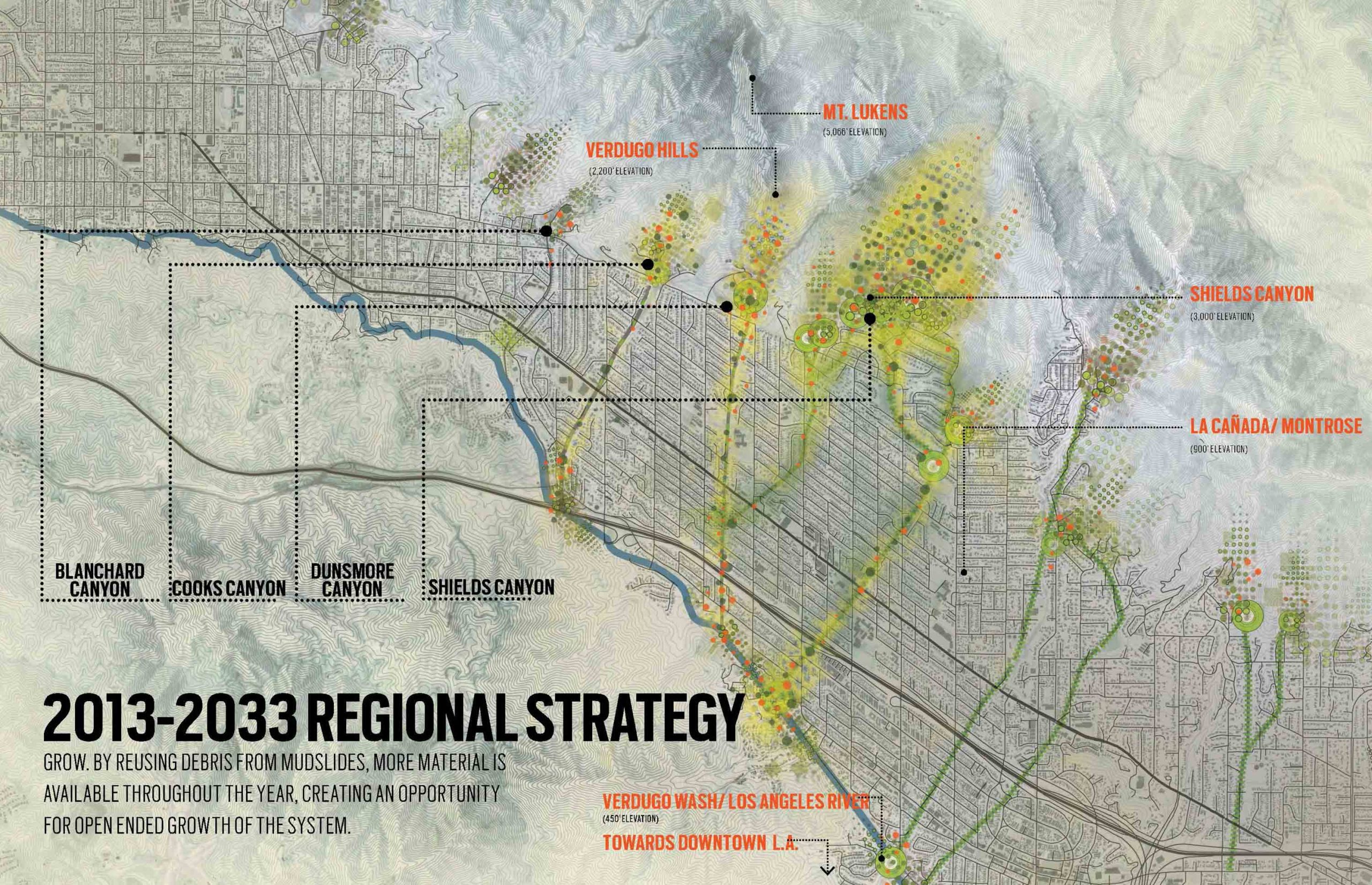
The ultimate strategy that links the canyons with micro basin infrastructure systems.

Active State
In its active state during extreme weather events, the micro basin network becomes a place of total infrastructure, where the whole hillside works a system to catch and slow debris.
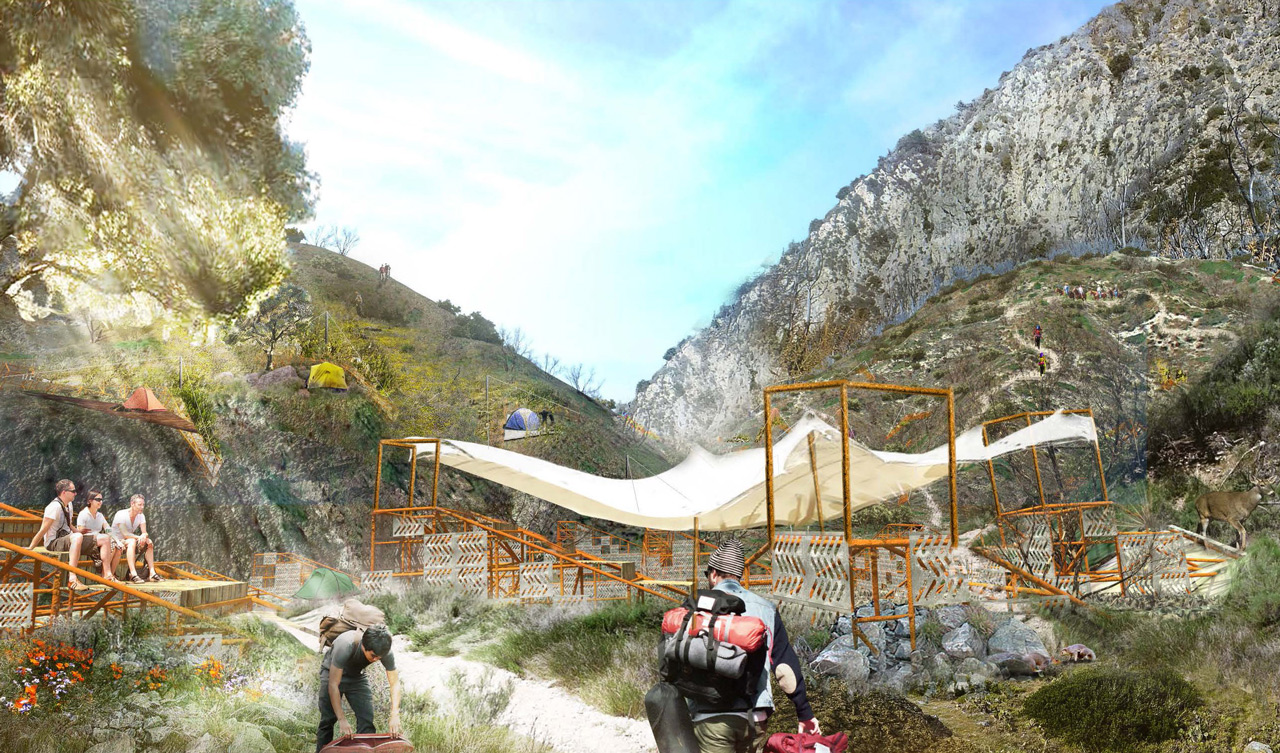
Latent State
In its latent state, during most of the year the micro basin network is the opposite of passive park, but rather a place of hybrid infrastructure and nature, where much less prescriptive programs emerge and the public nature of the space allows users to envision and create recreation possibilities.

